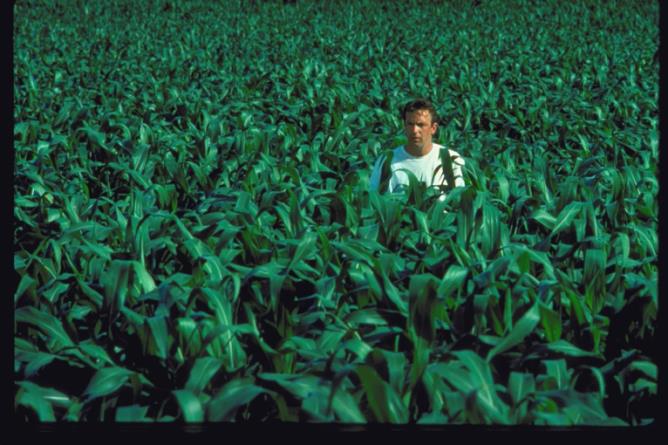Pennies from Heaven -- Is Programmatic Advertising a Panacea?

Last week's Yankees/White Sox game at the movie set in Iowa was terrific. We felt re-inspired by baseball. In the movie Field of Dreams, Kevin Costner's character (Ray) makes a tremendous effort and suffers significant ridicule, to build a baseball field on his precious Iowa farmland. He did this because a voice told him that if he builds it, "they will come." The point of the movie turns out to be that building the field alone is not a compelling enough reason for his father to come back to see him again. While required, the field is just the stage set up for the ultimate meeting. Ray must still go through the many steps of self-discovery to induce the reunion to happen on the field.
Traditional media's advertising marketplace is coming to a similar understanding. Building the product is not a substitution for enhanced sales efforts -- but combined, they are a powerful force.
Publishers are investing great sums of money to advance their backend processing infrastructure and to automate their channel connections to buyers. These connections enable marketers to view, evaluate and transact on available inventory more efficiently than ever before -- but they do not cause inventory to be bought. The improvements simply eliminate cumbersome manual process and reduce cycle time which enables a reallocation of resources -- something technology does very well.
The improved purchase channels for advertising can be allocated into one of four buckets. In each, inventory availability, asset/location characteristics, associated audience measurements, pricing, etc. are made available to buyers.
Direct IO through an account executive via an internal corporate user interface on the AE's desktop or mobile device.
Direct Connections -- for larger buyers of media and sophisticated agencies who have their own planning models, publishers provide inventory, etc. via an API connection where that inventory information is mixed and evaluated against alternatives (similar publishers and cross-media). New Open Direct standards are being established to facilitate this channel.
Self Service -- for some small to mid-size agencies and buyers, publishers may wish to make their inventory detail and buying mechanisms available through an app or web interface.
Reselle Networks
Here, inventory is made available to third party sellers who in turn market publishers' products to unique buyers that are either incremental relationships or existing clients reached more efficiently through these arrangements.
Programmatic is simply an automated version of the reseller channel. A publisher makes its inventory available to Supply Side Platforms (SSP) who in turn makes it available to Demand Side Platforms (DSP) with whom buyers and their agencies are connected. Programmatic’s compelling proposition is that it provides access to the vast democratized digital advertising marketplace -- assuming the partners are well selected, and the technology is correctly integrated.
Building these downstream paths alone will not ensure that revenue will flow, as gravity is not a factor. From the outsider's perspective, the programmatic channel for digital buyers may seem to be a "field of dreams" where the appropriate technical connections tap into an endless supply of revenue from the connected digital ecosystem. That marketplace is larger than all traditional advertising combined and growing at double-digit rates. These digital participants seem to have automated everything. But they also have an enormous, engaged sales effort to complement their tech. Carolyn Everson recently stepped down as head of Facebook ad sales -- where over the last 10 years she built a massively engaged solutioning effort for their clients.
 The sales process will always be necessary, and it is arguably even more important as buyers' evaluations have become more complex, with granular intelligence data and where decisions need to be made faster. Finding success (digital media budgets) amongst the field of opportunities is a more complicated process today.
The sales process will always be necessary, and it is arguably even more important as buyers' evaluations have become more complex, with granular intelligence data and where decisions need to be made faster. Finding success (digital media budgets) amongst the field of opportunities is a more complicated process today.
Brands and agencies must be coached about the value each media component represents relative to the marketers' objectives for each distinct campaign. Publishers and their programmatic partners must be "advisors" and selling consultatively is their imperative with DSPs, agencies and brands. Appropriately, sales expenses are a big part of both groups' P&Ls -- and that won't change. But it will evolve.
Technology enhancements and the programmatic sales channel do not mean the robots are coming to replace intelligent sales teams. System changes mean that our teams can enhance their engagements to compete with digital media pros head-on. We must be ready to convince every buyer of the "why." If a brand has only $1 to spend on media, why should a buyer spend it in TV, on search or for a billboard, relative to search or banner ads? We must add intelligence to newly available audience data and present it to buyers in forms that facilitate their decisioning around value and utility.
Tech is the easiest bit to solve, provided you have capex, smarts and the commitment to use it. Investing shows an ambition to change the current operating paradigm. Technology improvements provide a good story, but the more productive investment is in repointing sales toward solutions, audiences and a brand's marketing objectives.
We must begin to sell with more intelligence against those objectives, while at the same time replacing the more simplistic processes with "robots" whose algorithms and operational efficiencies are coming faster and with significant cost benefits. In an age where you can find information about, and buy anything in seconds, buyers will not tolerate waiting days to plan and book OOH campaigns. But buyers -- in any business -- need to be shown the way.
Building the ball field is only part of the answer. Finding pennies (and digital ad budgets) amongst the corn takes a client-engaged mindset. "Is this Heaven? No, it's Iowa."
A version of this article first appeared on Medium
Photos courtesy of OUTFRONT
Click the social buttons to share this story with colleagues and friends.
The opinions expressed here are the author's views and do not necessarily represent the views of MediaVillage.com/MyersBizNet.


